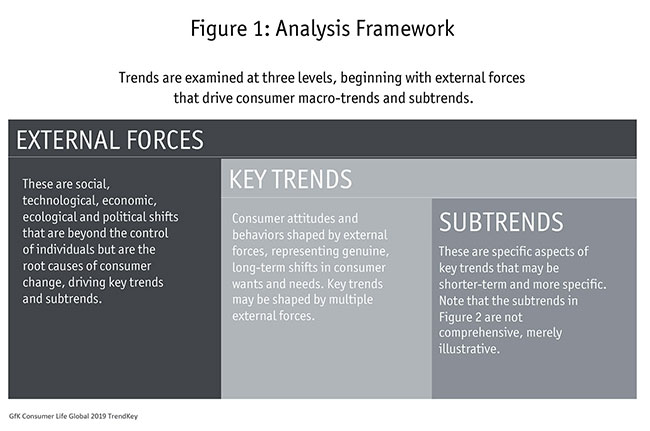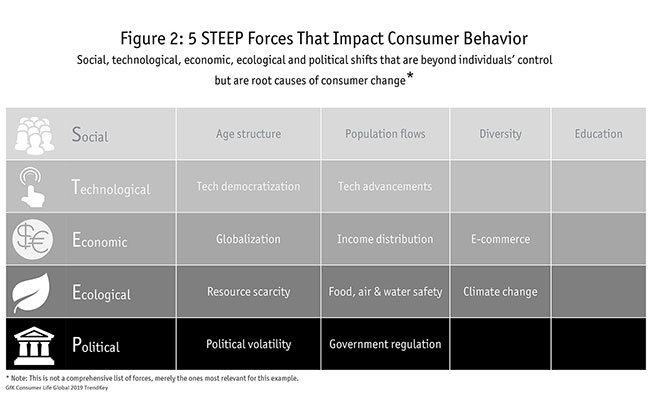Giving shape to the future
Editor's note: Based in New York, Tim Kenyon is vice president, consulting in the Consumer Life division of research firm GfK.
 Identifying consumer trends before they reach critical mass is a challenge – part art and part science. Today’s consumers are more confident, demanding and dynamic; their world moves at unprecedented speeds and their relationships with brands are constantly evolving.
Identifying consumer trends before they reach critical mass is a challenge – part art and part science. Today’s consumers are more confident, demanding and dynamic; their world moves at unprecedented speeds and their relationships with brands are constantly evolving.
When we do find that new, emerging movement – one that illuminates untapped consumer needs and desires – we may have the beginnings of a great new product line or an award-winning ad campaign. But unearthing a trend is truly just half the battle; unless our story speaks to leaders throughout the organization, this great new discovery may never grow up to be anything but a theory – a great notion that ultimately leads nowhere.
To become truly impactful, trends need structure and context. One trend, discovered and presented in isolation, is not nearly as convincing as a “family” – a series of interconnected trends, possibly based on different sources, that holistically describe all the issues impacting consumers.
Take the automotive industry. Multiple trends are impacting this crucial sector – from automation and technology to environmental regulations, to shifting attitudes towards car ownership and even changes in urban planning. Having watched these trends taking shape and knowing how they might interact, the most successful automotive companies now see themselves in the business of mobility (moving people) not just “selling cars.” They recognized the signals that were whispering that change is coming and they are now adapting to how people want to travel, today and in the future.
Over the past decade, many successful companies have been able to recognize trends before they hit critical mass – like the rise of environmental concern and eco-citizenship, which brought us success stories such as Tesla or TerraCycle. Millennials are leading the way in prioritizing experience over possessions – embracing immersive virtual reality or the growing interest in global travel. And we all know about the fast-rising demand for instant access to goods and services which has powered juggernauts like Amazon and Netflix. All of these dramatic shifts began as subtle inclinations, barely visible to researchers or the marketplace.
But gaining a rich perspective, and marketplace advantage, takes more than just one or two interesting trends. The goal should be to build a framework of understanding – a structure for bringing trends to life and inspiring action throughout your organization. Brands need to understand how trends are evolving and interacting, when new trends are on the horizon and if more mature trends need to be retired.
When we take a framework approach to interpreting and activating trends, we can use them to address a host of questions and tasks companies face. We can apply our framework to:
- white-space exercises, which provide input for ideation around new products or services, as well as insights to frame each step of the development process;
- corporate strategy, which sets long-term business goals, gets up to speed on a new customer target and informs rebranding initiatives;
- primary research projects, which inform and influence expert interviews through screening criteria and effective development of questionnaires and discussion guides;
- marketing and communications, which empower culturally relevant messaging, marketing campaigns and brand activations;
- customer and partner collaboration, which provides a framework for stakeholders so that all parties are aligned on consumer needs; and
- internal alignment, which serves as input for new employee orientation, professional development, collaboration across corporate functions and larger organizational change initiatives.
With all of these potential applications, the argument for building and applying a consumer trends framework becomes hard to contradict.
 Ranking of forces
Ranking of forces
The essence of a framework is the ranking of forces shaping your particular marketplace and brand fortunes, from the broadest level to the most minute. The framework captures the trend hierarchies and interrelationships at play as your products intersect with consumers’ daily lives – their habits, needs and changing beliefs. The framework should be an organism, one that responds to cultural shifts large and small and therefore needs to be revisited on a regular basis – to be sure that core assumptions and strategies are still valid.
At the highest level of influence, fundamental forces are big drivers of ideas and behavior – social, technological, economic, ecological and political (STEEP) changes that are beyond the control of individuals. In fact, they are not even consumer trends in the strict sense. We would place urbanization, trade wars and climate change into this category.

Moving down a level, we find key macro consumer trends, which are the shifts that result from fundamental forces. A force like climate change, for example, has influenced people to think more about their own environmental behaviors and to become more thoughtful and conscious about consumption.
Below the macro layer can be a number of subtrends that might pertain to a category, industry or demographic group. Thinking again about the rise in environmental concern, in the automotive category we might see this trend manifest itself in accelerating demand for electric vehicles. In the food category, though, the subtrend might be people trying to minimize their food waste through reducing packaging consumption or composting.
Frameworks are not just maps and rankings, though; they are developed through a process that is as important to their success as the most ingenious trend insight. The key steps to assembling a healthy and useful consumer trends framework can be summarized in three words – purpose, partners and process. Let’s take a close look at each of these essential ingredients.
Purpose. To create a sound framework, we need to understand goals and needs. Will you be using it for internal inspiration or external thought leadership (or perhaps both)? What is the intended geographic footprint of your trends? Think, too, about how your category will be incorporated. Many of our clients want to understand what is happening in other categories to further spark inspiration. For example, a company in the food category will need to know how cars are being redesigned to properly inform packaging innovation for food-on-the-go.
Partners. To weave the framework into the organization, many of our clients first build an internal trends council – a cross-section of stakeholders from insights, marketing, strategy and other areas. The council evaluates the trends as they are developed and provides a sounding board for new ideas. While you want to include all essential voices, there is also the possibility of having too many voters; striking a balance between representation and crowd-sourcing is key.
Choose external partners with care, as well. External trends partners (like GfK Consumer Life) can help you fill in gaps in knowledge, bring unbiased experience to the project and can help tie multiple streams of data together. But one partner may not be able to provide all the answers you need; decide which decisions you have to make and find reliable sources for that information.
Process. You must evaluate the data you will use to build trends and construct them from the ground up. Are you only going to rely on survey data or will you be looking at other sources – a trends firm or point-of-sale data? Not all information is created equal; making these types of decisions requires the expertise of a seasoned trends-and-forecasting team.
In terms of sequence, we recommend following an approach that first looks at fundamental forces – the large shifts in culture that are outside of consumer control – then moving on to the signals and implications that define consumer trends at a macro (or key) and sub/category level.
Case study: Global food and beverage company
Recently, GfK partnered with a global food and beverage ingredient company to help them develop a unified, global consumer trends framework to be used for internal innovation inspiration and as a thought leadership device for their industry partners. As we set out on this journey, there were multiple objectives.
First was alignment around a common set of trends that could be leveraged by multiple divisions and regions. Important to this objective was developing a trends council so that each region had a voice in the development of the framework.
The next objective was to ensure the trends framework was solidly supported by data. Important to this effort was to have a syndicated, trended, global data resource in GfK Consumer Life. The client supplemented the Consumer Life data with behavioral evidence. This was a key step toward making sure that the attitudes were manifesting in real sales and product launch/marketing data.
Third, the research needed to be proprietary in nature and thus relevant to the food and beverage business. A proprietary framework creates more stickiness for internal stakeholders and it becomes more manageable for food manufacturing customers. In this case, four macro trends were identified, with two to three food and beverage trends per key trend.
The framework was further bolstered by a successful activation and socialization plan that also included carefully developed deliverables and data visualization tools. The fully developed framework has been used to internally strengthen the business case for branded solutions. The framework has also been shared with the client’s customers to help them evaluate their current product portfolio and understand gaps in their product line based on the trends.
As you think about developing a consumer trends framework, there are just a few key ideas to remember. Activation only can happen if you effectively engage stakeholders and continue to integrate a trends perspective into ongoing projects. Be sure to provide the context to help stakeholders understand the “why” behind trends. And, lastly, keep your content fresh by evaluating and enriching your consumer trends program with additional inputs and perspectives. With ample forethought and a commitment to ongoing cultivation, your framework will pay dividends for many years to come.
